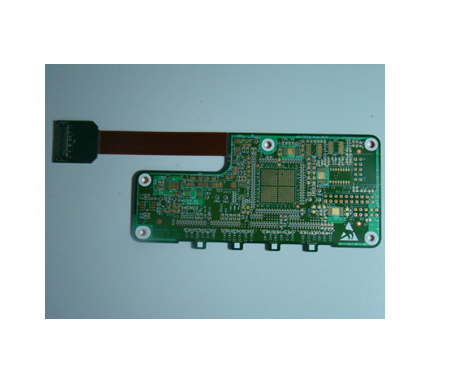FPC production process
The production process of flexible printed circuit boards is basically similar to the production process of rigid boards. Regarding certain operations, the flexibility requirements of laminates have different equipment and completely different processing methods. Most flexible printed circuit boards use negative methods. However, some difficulties have arisen in the mechanical processing and coaxial processing of the flexible laminate. One of the primary problems is the processing of the substrate.
Flexible materials are rolls of different widths, so during etching, the transfer of flexible laminates requires the use of rigid brackets. In the production process, the processing and cleaning of flexible printed circuits is more important than the processing of rigid boards (Lexin, 1993). Incorrect cleaning or operation that violates the regulations may lead to failure in the subsequent product manufacturing. This is due to the sensitivity of the materials used in the flexible printed circuit, and the flexible printed circuit plays an important role in the manufacturing process.
The substrate is affected by mechanical pressure such as wax drying, lamination, and electroplating. The copper foil is also susceptible to knocking sounds and dents, and the extended part ensures maximum flexibility. Mechanical hazards or work hardening of copper foil will reduce the flexible life of the circuit. During manufacturing, typical flexible single-sided circuits need to be cleaned at least three times, but multi-substrates need to be cleaned 3-6 times because of its complexity.

In comparison, rigid multilayer printed circuit boardsmay require the same number of cleaning times, but the cleaning procedures are different, and you need to be more careful when cleaning flexible materials. Even if it is subjected to very light pressure during the cleaning process, the dimensional stability of the flexible material will be affected, and the panel will be elongated in the z or y direction, depending on the tendency of the pressure. The chemical cleaning of flexible printed circuit boards should be environmentally friendly. The cleaning process includes alkaline dye bath, thorough rinsing, micro-etching and final cleaning.
The damage of the film material often occurs during the process of loading the panel, when agitating in the pool, removing the shelf from the pool or not setting up the shelf, and destroying the surface tension in the clean pool. The holes in the flexible board are generally punched, which leads to an increase in processing costs. Drilling is also possible, but this requires special adjustment of the drilling parameters, and then obtain a non-smeared hole wall. After drilling, remove the drilling dirt in a water cleaner with ultrasonic mixing. It has been proven that the mass production of flexible boards is cheaper than rigid printed circuit boards. This is because flexible laminates allow manufacturers to produce circuits on a continuous basis. This process starts from the laminate rolls and directly generates finished products.
In order to manufacture the printed circuit board and etch a continuous processing diagram of the flexible printed circuit board, all the production processes are completed in a series of machines placed in sequence. The screen printing may not be part of this continuous transmission process, which caused a discontinuity in the online process. Generally, soldering in flexible printed circuits is more important because of the limited heat resistance of the substrate. Hand soldering requires satisfactory experience, so if possible, wave soldering should be used. When soldering flexible printed circuits, you should pay attention to the following: 1) Because polyimide is hygroscopic, the circuit must be baked before soldering (for 1h at 250°F). 2) The pad is placed on a large conductor area, such as the ground plane, power plane or heat sink, and the heat dissipation area should be reduced.
This restrains heat emission and makes welding easier. 3) When manually soldering pins in densely populated areas, try not to continuously solder adjacent pins, but move the soldering back and forth to prevent parts from overheating. Information about the design and processing of flexible printed circuit boards can be obtained from several sources, but the best source of information is always the producer/supplier of processed materials and chemicals. After the information provided by the supplier and the scientific experience of the processing experts, high-quality flexible printed circuit boards can be produced.